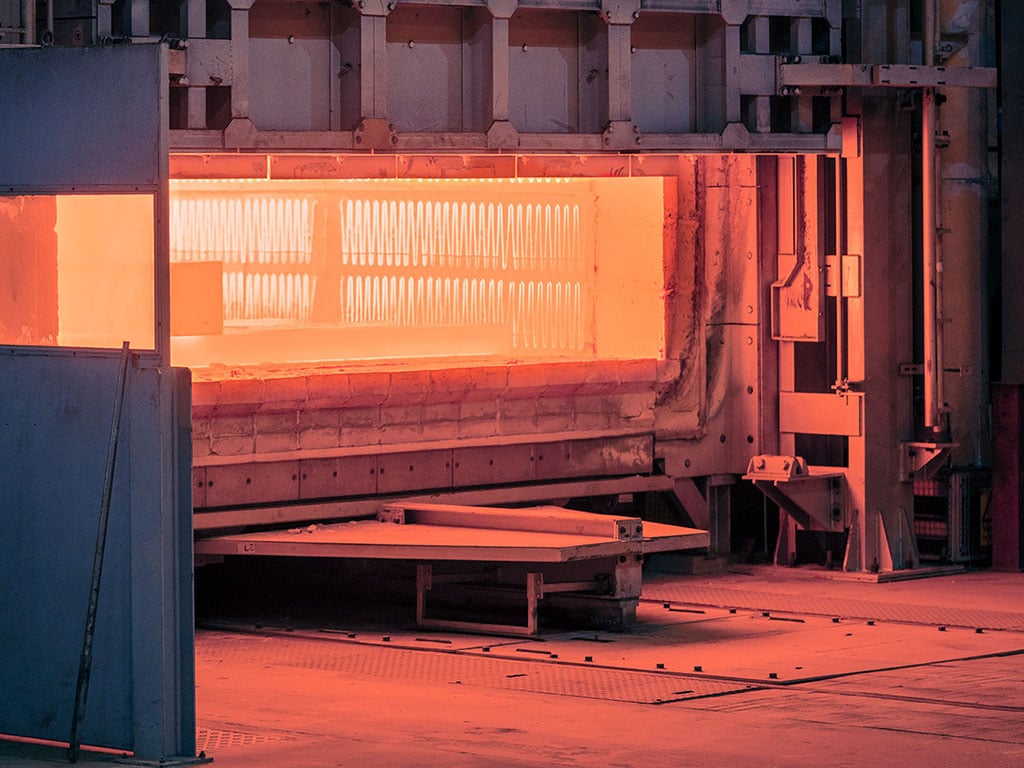 Åsa Ekdahl, Head of Environment and Climate Change at World Steel Association
Åsa Ekdahl, Head of Environment and Climate Change at World Steel Association
The steel industry needs to make clear to policymakers what their future carbon-free electricity needs will look like and what the benefits of increased electrification will be.
"For a low-carbon future to be truly viable, policy changes will be needed", Ekdahl says. “The steel industry needs to make clear to policymakers what their future carbon-free electricity needs will look like and what the benefits of increased electrification will be.” These benefits will largely arise from replacing fossil fuels with carbon-free electricity, she says.
In the meantime, however, the grid in most countries is still not able to provide low-carbon electricity at the scale and cost required to support far-reaching changes. For example, the Swedish HYBRIT (Hydrogen Breakthrough Ironmaking Technology) project – an initiative through which SSAB, LKAB and Vattenfall are seeking to replace coal with fossil-free hydrogen in order to develop the world’s first fossil-free ore-based steelmaking technology – is expected to consume some 15 TWh of fossil-free electricity on its own.
Great potential in electrifying supporting processes
Without sufficient carbon-free electricity to convert the entire industry to green steel, sustainable steps can be taken in the meantime, Ekdahl says. For example, steelmakers may opt to use natural gas for direct reduced iron (DRI) production as an interim solution until hydrogen becomes more affordable. Another option is to start electrifying supporting processes.
 Electric car bottom furnace at Kanthal's production site in Hallstahammar, Sweden
Electric car bottom furnace at Kanthal's production site in Hallstahammar, Sweden
“Aside from transforming the steelmaking itself to a low-carbon process, the industry should focus on electrifying other vital areas, such as reheating, heat treatment and supporting processes, as they have great potential for electrification,” she says.
According to estimates from the Swedish Steel Producers’ Association, electricity could replace some 80 percent of the fuel used for heat treatment and about 20 percent of the fuel used for heating in the Swedish steel industry. That would amount to a 300,000-ton reduction in annual CO2 emissions, cutting them nearly in half to 400,000 tons per year. While similar projections for the global steel industry are not yet available, the opportunity remains considerable.
There’s no excuse to hold off
And while some changes may have to be made using fossil-based electricity for now, that is not necessarily an excuse to hold off, Ekdahl maintains.
“Even if carbon-free electricity is not fully available, making the switch now could help indicate what future electricity needs will look like, even if it still produces emissions for the time being,” she says.
Sustainability measures can also be used to benefit the bottom line. For example, the World Steel Association’s “step up” program helps businesses reduce their emissions and save on their energy costs through efficiency improvements. According to worldsteel’s research, the successful implementation of the methodology has the potential to reduce direct and indirect emissions by up to 20 percent at the average ore-based steelmaking site, and up to 50 percent at the average scrap-based facility.
Not everyone can be an early adopter
So, who could stand to benefit from making green steel today?
It is no secret that producing low-carbon steel is significantly more costly than using conventional methods. However, that has not hindered some high-profile brands from committing to making the switch.
In April, Swedish auto giant Volvo said it was partnering with high-strength steel pioneer SSAB to develop and commercialize the world’s first vehicles made from fossil-free steel. The steel, which SSAB will make using hydrogen, could be incorporated into the first concept vehicles and components by the end of this year. Meanwhile, Mercedes-Benz AG has announced the purchase of an equity stake in Swedish start-up H2 Green Steel, and its intention to launch vehicles using the company’s CO2-free steel as early as 2025.
Ekdahl believes there are both potential advantages and disadvantages to being an early adopter in the green steel segment.
“Every business is different,” she says. “When it comes to the commercial viability of green steel, it really depends what you do. If you make high-end products, targeting the premium market, your customers may already be willing to pay more for a sustainable product.” For others it may make more sense to wait until an off-the-shelf technology is available, she adds.
The advantage for companies like Volvo who choose to take the plunge now is the opportunity to partner with a leading producer, such as SSAB, to develop the exact product they want. Meanwhile, others may opt for a different route.
“What everyone can do now is to engage with policymakers,” Ekdahl says. “Green steel may currently be prohibitively costly, but conventional technologies also stand to get more expensive in the future as we contend with stricter carbon penalties and emission regulations.”
About World Steel Association’s step up program
Step up is a multistep process covering raw materials, energy input, yield and maintenance. It can be used to support improvements in mill operations to achieve efficiency levels commensurate with the steel industry’s top performers. Worldsteel has developed an industry-wide four-stage efficiency review process, based on leading practice, for all mill operators to follow. Find out more here.
Climate-neutral policies needed for real change
Apart from putting pressure on the energy sector to expand the production of low-carbon energy, Ekdahl says governments and regulators could also boost the competitiveness of green steel through climate policies and procurement decisions.
“If fossil-free steel was specified in public procurement procedures, that would speed up the transition,” she concludes. “In the long term, once governments officially start to pursue a policy of climate neutrality – as we have seen in places like the U.S., Japan, China and Korea – that is when the steel industry will follow suit and real change will come.”